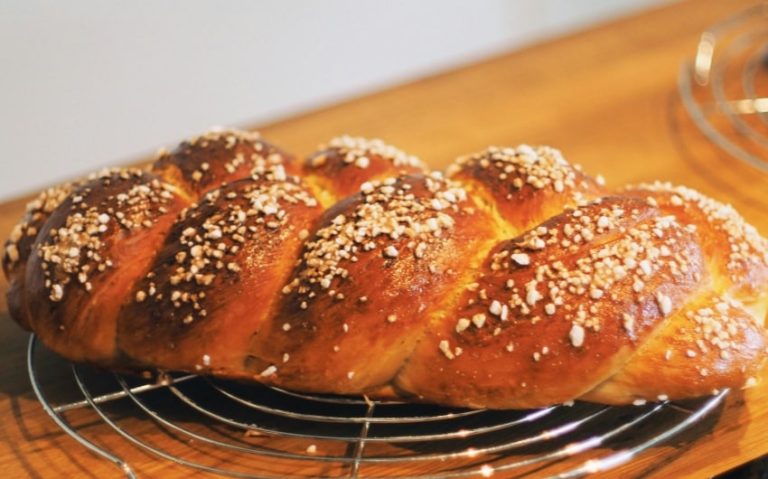Navigating the Dilemma: Can You Put Shoes in the Dryer?
Whether caught in a rainstorm or dealing with the aftermath of an adventurous run, the question of “can you put shoes in the dryer” is one many of us have pondered. Properly drying your shoes is crucial not only for immediate comfort but also to maintain their quality and extend their lifespan.
This guide aims to address this common dilemma and offers insight into the best practices for shoe care.
Can You Put Shoes in the Dryer?

Image source: Pinterest
Whether or not you can put shoes in the dryer depends largely on the shoe’s material and the specific care instructions provided by the manufacturer. Not all shoes are created equal in terms of how they handle heat and agitation.
Some materials, like certain synthetics and canvas, can often endure a cycle in the dryer without significant damage when appropriate precautions are taken, such as using a low heat setting. However, materials like leather, suede, and some delicate fabrics may not fare as well, potentially suffering from warping, shrinking, or other forms of damage.
It’s essential to consult the care label on your shoes before deciding to use a dryer. If the label advises against drying or does not mention it as an option, it’s safest to err on the side of caution and choose an alternative drying method.
In summary, while some shoes can be dried in a dryer under the right conditions, not all footwear is suitable for this method. Making an informed decision based on the material and manufacturer’s guidelines is crucial to preventing damage to your shoes.
General Concerns with Putting Shoes in the Dryer

Image source: Pinterest
Putting shoes in the dryer, while convenient, can raise several concerns that could potentially lead to damage not just to the shoes, but also to the dryer itself. Here are the key concerns:
- Damage to Shoes: The heat and tumbling action of a dryer can be harsh on shoes. High temperatures can cause materials like leather and suede to warp, shrink, or become brittle. Synthetic materials might melt or deform, while adhesives used in many shoes could weaken, leading to the sole separating from the upper part of the shoe.
- Noise and Disruption: Shoes banging against the drum of the dryer can be loud and disruptive. This is not only a nuisance but can also be a sign that your shoes and dryer are undergoing undue stress.
- Wear and Tear on the Dryer: Regularly drying shoes in the dryer can contribute to faster wear and tear of the appliance. The constant banging can damage the drum’s interior, affect the dryer’s balance, and potentially lead to more serious mechanical issues over time.
- Risk of Fire: Though rare, there is a risk of fire when drying shoes in the dryer, especially if the shoes contain metal parts or the dryer is not properly maintained. Lint buildup, when combined with excessive heat, can create a fire hazard.
- Shoe Deformation: The tumbling action, coupled with the heat, can cause shoes to lose their shape. This is particularly true for athletic and running shoes, which are designed to support the foot in specific ways. Once deformed, the shoes may not provide the intended support, potentially leading to discomfort or injury.
To mitigate these concerns, it’s essential to follow best practices if you choose to dry shoes in the dryer, such as using a no-heat or low-heat setting and placing the shoes in a protective bag or using a drying rack. However, whenever possible, air drying is the safest method to preserve both your shoes and your dryer.
How to Safely Dry Shoes (If Applicable)

Image source: Pinterest
Drying shoes safely in a dryer requires careful consideration to avoid damaging both the shoes and the appliance. Here are steps and tips to dry your shoes safely if they are deemed dryer-safe:
1. Check Manufacturer’s Instructions
Before anything else, consult the care label or instructions provided by the shoe manufacturer. This is the most reliable source of information on whether your shoes can be safely dried in a dryer.
2. Use a Low Heat Setting
High heat can damage shoe materials. If your dryer has a “no heat” or “air fluff” setting, use it. This circulates room-temperature air to dry the shoes without the risks associated with high heat.
3. Protect Your Shoes and Dryer
Place shoes in a mesh laundry bag or use a dryer rack if available. This prevents the shoes from banging against the sides of the dryer, reducing noise and preventing damage to both the shoes and the appliance.
4. Dry with Towels
Adding a few towels to the dryer with your shoes can help cushion the impact as they tumble, further reducing noise and protecting your shoes.
5. Check Regularly
Don’t just set the dryer and forget it. Check on the shoes periodically to assess their drying progress and ensure they are not overheating or becoming misshapen.
6. Use a Dedicated Shoe Drying Device
If you frequently need to dry shoes, consider investing in a shoe drying device. These are designed to dry shoes gently without the risks associated with traditional dryers.
7. Alternative Methods for Non-Dryer-Safe Shoes
If your shoes should not be placed in the dryer, opt for air drying. Remove the insoles and loosen the laces to open the shoes up as much as possible. Place them in a well-ventilated area away from direct heat and sunlight. You can also stuff them with newspaper or a towel to absorb moisture and help maintain their shape.
Following these guidelines can help you dry your shoes more safely, preserving their shape, material integrity, and the longevity of your dryer. Remember, when in doubt, air drying is the safest and most effective method for all types of shoes.
Potential Risks and How to Mitigate Them

Drying shoes in a dryer can introduce several risks to both your footwear and the dryer. Understanding these risks and how to mitigate them is crucial for maintaining the integrity of your shoes and the lifespan of your appliance.
1. Risk to Shoes
a. Material Damage: Heat can cause materials to warp, shrink, or become brittle. Delicate materials like leather and suede are particularly vulnerable.
Mitigation: Always use the lowest heat setting or a no-heat air-fluff option if available. Consider air drying delicate shoes instead.
b. Glue Damage: The heat from the dryer can weaken adhesives, potentially causing soles to detach.
Mitigation: Avoid using the dryer for shoes glued together, especially if they’re expensive or high-quality. Opt for air drying.
c. Color Fading: Prolonged exposure to heat can lead to color fading or discoloration.
Mitigation: Limit dryer use to light-colored or less delicate shoes, and use a protective bag to reduce direct heat exposure.
2. Risk to Dryer
a. Wear and Tear: The constant tumbling of shoes can damage the dryer’s drum and lead to mechanical issues.
Mitigation: Use a drying rack or hang shoes from the door (if your dryer design allows) to prevent them from tumbling.
b. Noise Pollution: Shoes banging against the dryer drum can be loud and disruptive.
Mitigation: Cushion the shoes by drying them with towels, or use a mesh laundry bag to minimize impact noise.
c. Fire Hazard: Lint build-up and obstructed vents can pose a fire risk, especially when drying items that may obstruct airflow more than typical laundry.
Mitigation: Regularly clean the lint trap and ensure the dryer vent is clear before drying shoes or any bulky items.
3. General Mitigation Strategies
- Spot Test: If you’re unsure how your shoes will react to the dryer, test a small, inconspicuous area first.
- Regular Checks: Periodically check the shoes during the drying process to ensure they’re not overheating or becoming damaged.
- Consult Professionals: For expensive or cherished shoes, consider professional cleaning and drying services to avoid any risk of damage.
By understanding these potential risks and taking proactive steps to mitigate them, you can safely dry shoes in your dryer when necessary, while ensuring the longevity of both your shoes and the appliance. Whenever possible, however, air drying remains the safest and most effective method for all types of footwear.
Frequently Asked Questions
1. Can all types of shoes be put in the dryer?
No, not all types of shoes are suitable for the dryer. Materials like leather, suede, and shoes with significant adhesive components can be damaged by the heat and tumbling action. Always check the manufacturer’s care instructions before attempting to dry shoes in a dryer.
2. Will drying shoes in the dryer cause them to shrink?
There is a risk of shrinking, especially for shoes made of natural materials like leather or cotton. Using a low heat or air-fluff setting can minimize this risk, but air drying is safest to prevent shrinkage.
3. How can I reduce the noise when drying shoes in the dryer?
To reduce noise, place the shoes in a mesh laundry bag or use a dryer rack if available. Adding a few towels can also help buffer the noise as the shoes tumble.
4. Is it safe to leave the dryer unattended while drying shoes?
It’s best not to leave the dryer unattended when drying shoes. Check periodically to ensure the shoes are not damaging the dryer or becoming too hot.
5. How long should shoes dry in the dryer?
Drying time can vary based on the shoe material and the dryer setting. Start with 20-30 minutes on a low or no-heat setting and check the progress. It’s important to remove the shoes as soon as they’re dry to avoid overheating.
6. Can putting shoes in the dryer damage the dryer?
Yes, the tumbling action of shoes can cause wear and tear on the dryer drum and potentially disrupt the balance of the appliance. Using a protective bag or drying rack can help minimize damage.
7. What’s the best way to dry shoes without a dryer?
The best method is air drying at room temperature in a well-ventilated area. Remove the insoles, open up the shoes as much as possible, and if necessary, stuff them with newspaper to absorb moisture and help them hold their shape.
8. Can I dry shoes with metal parts or electronics in the dryer?
Shoes with metal parts or built-in electronics should not be dried in a dryer as they can pose a fire risk or get damaged. Air drying is recommended for these types of shoes.
9. What do I do if my shoes have become misshapen after drying?
If shoes have become misshapen, try stuffing them with newspaper or a shoe form while they are still warm to help reshape them. For leather shoes, applying a leather conditioner after they are dry can help restore flexibility.
Understanding these FAQs can help you make informed decisions about drying shoes, ensuring the longevity of your footwear and the safety of your home appliances.
Conclusion
“Drying shoes in the dryer” is a question with a complex answer that depends on various factors, including the material and construction of the shoe. By following the guidelines provided, you can ensure your shoes last longer and stay in good shape. Remember, when it comes to shoe care, taking the time to dry your shoes properly can make all the difference.







